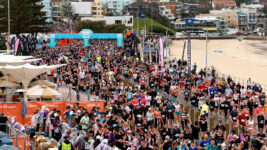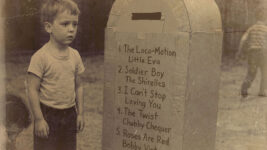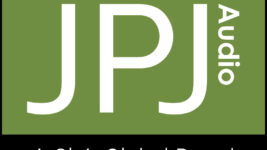CREATIVE
12 Apr 2023
PANTHER and The Audio Equation
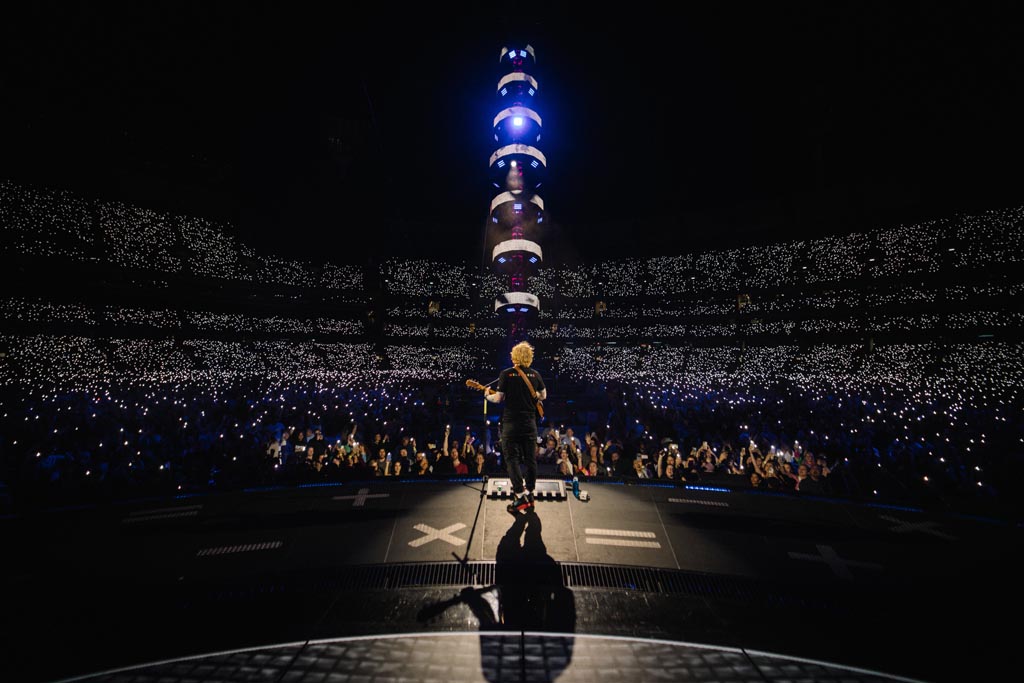
Subscribe to CX E-News
Major Tom and Ed Sheeran’s + – = ÷ x (Mathematics) Tour
This was it. The record- breaking, biggest ticketed concert in Australian history had rolled into the MCG. Thursday March 2 would see 105,000 paying fans pack the stadium, beating Adele’s record of 100,000 in 2017. The next night, Ed broke the record again with 109,500.
This juggernaut wasn’t just eagerly awaited by the horde of Ed fans known as The Sheerios, it was also a PA and concert tech nerd’s big night, hearing Meyer Sound’s astonishing PANTHER line array deployed in-the-round, with an ingenious mast and cable net rigging system that actually uses the PA as essential ballast.
Walking onto the grounds of the MCG is intimidating for anyone, anytime, but as I strolled onto the pitch to see the audio crew from English production company Major Tom, I was overwhelmed by the sheer scale of both the production and the stadium itself. Even for Ed’s seasoned crew, this was to be the biggest show of the world tour so far, just pipping their previous crowd record of 100,000 in a German stadium.
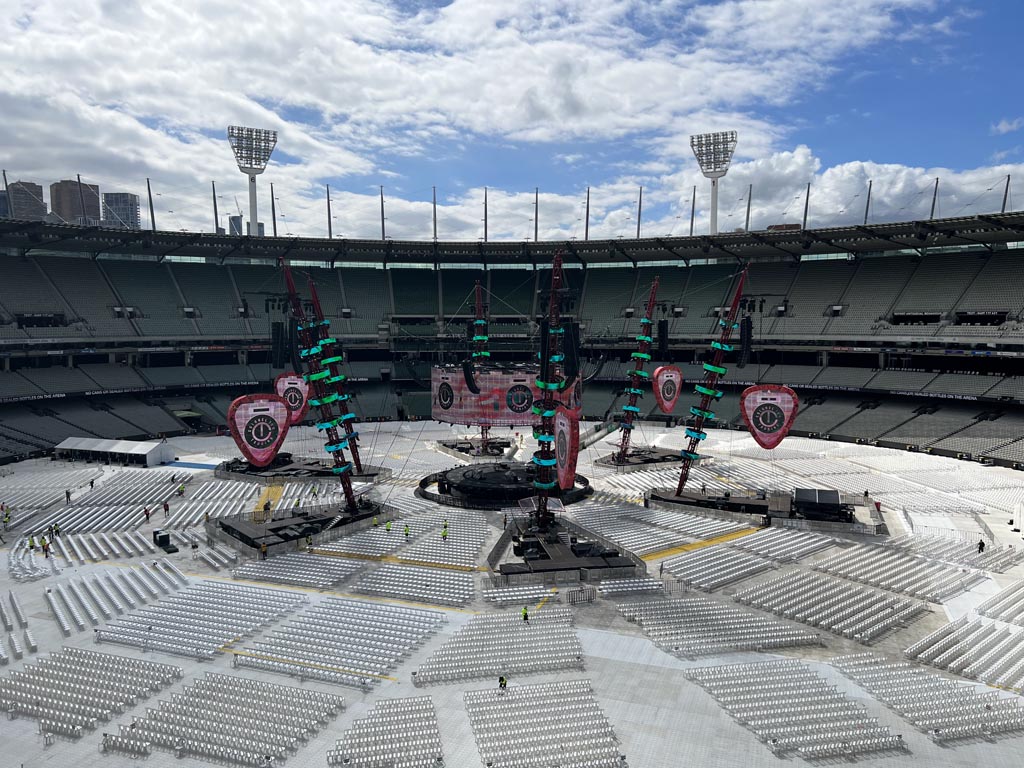
PA system technician Charlie Albin, who was just about to hand over the touring reins to Adam Wells, greeted myself and Meyer Sound’s Owen Ironside, and took us on a tour of the stadium as soundcheck roared into life.
Six arrays of PANTHER hang from the central ring of the circular LED screen and cabling, known as ‘The Halo’, each using 10 Panther-L (long) and four Panther-M (medium) dispersion elements. Eight outer arrays hang from the giant red ‘masts’ that also host the LED ‘Plectrums’, holding 12 Panther-L, two Panther-M, and two Panther-W (wide) elements. Six flown arrays of Meyer Sound 1100-LFC low-frequency control elements (subwoofers) hang next to PANTHER, and 22 Meyer Sound LEOPARD elements ring Ed’s central podium as fill. Six ground stacks of three 1100-LFC each sit under the stage.
All of this was firing on all cylinders as Charlie took Owen and I to almost every conceivable listening environment in the stadium; down on the ground, up in the gods, and everywhere in between. What completely blew me away was walking around the ‘G about half way up, for a hundred metres or so around, passing between three or four arrays worth of coverage, I couldn’t hear it change, anywhere. The pattern control on the horns is so tight and the system deployed so beautifully that I couldn’t find the seams.
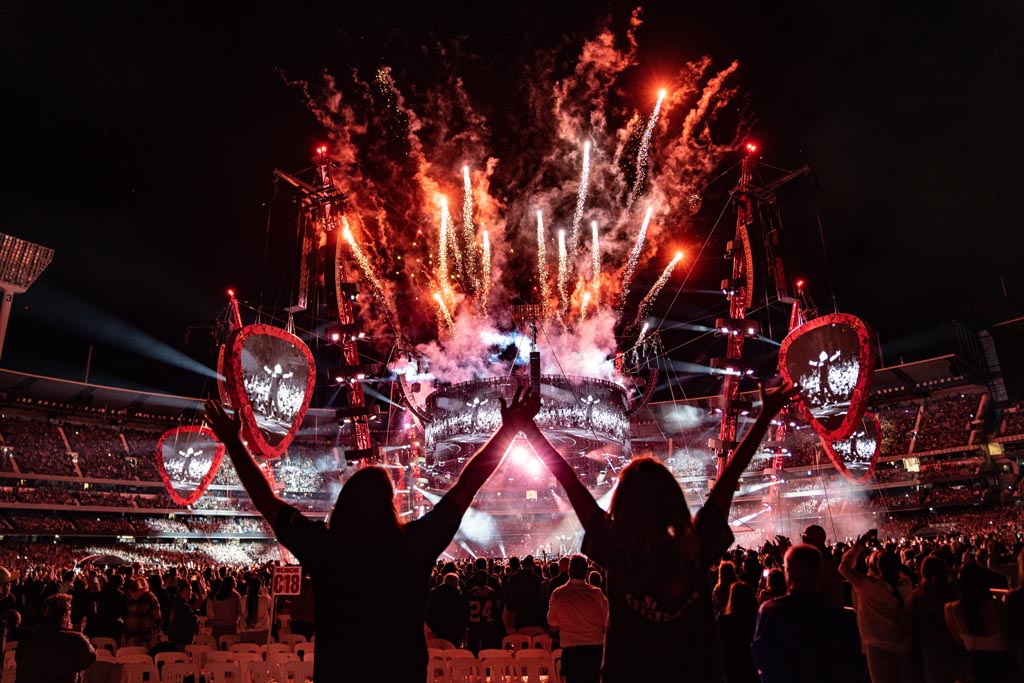
I actually got Charlie to show me where coverage overlapped, between two outer flown arrays up in the gods, from an inner flown array to an outer flown array on the ground, and from front fill to an inner array. I could only just pick it, and I still think that was possibly psychological. If he hadn’t told me, I would never have found the borders.
PANTHER is remarkable for many reasons; its power to weight ratio, its brilliant new design using lighter and better materials, and its full AVB signal path. But most importantly, it sounds utterly linear, incredibly accurate, and beautifully dynamic. An empty MCG with 14 line arrays at full volume produces a healthy amount of reverberation and slapback, but the accuracy of PANTHER and the team’s configuration kept it to a minimum. Later that night, when 105,000 acoustically absorbent punters turned up, it was perfect. It was a gobsmacking achievement in large-scale live sound.
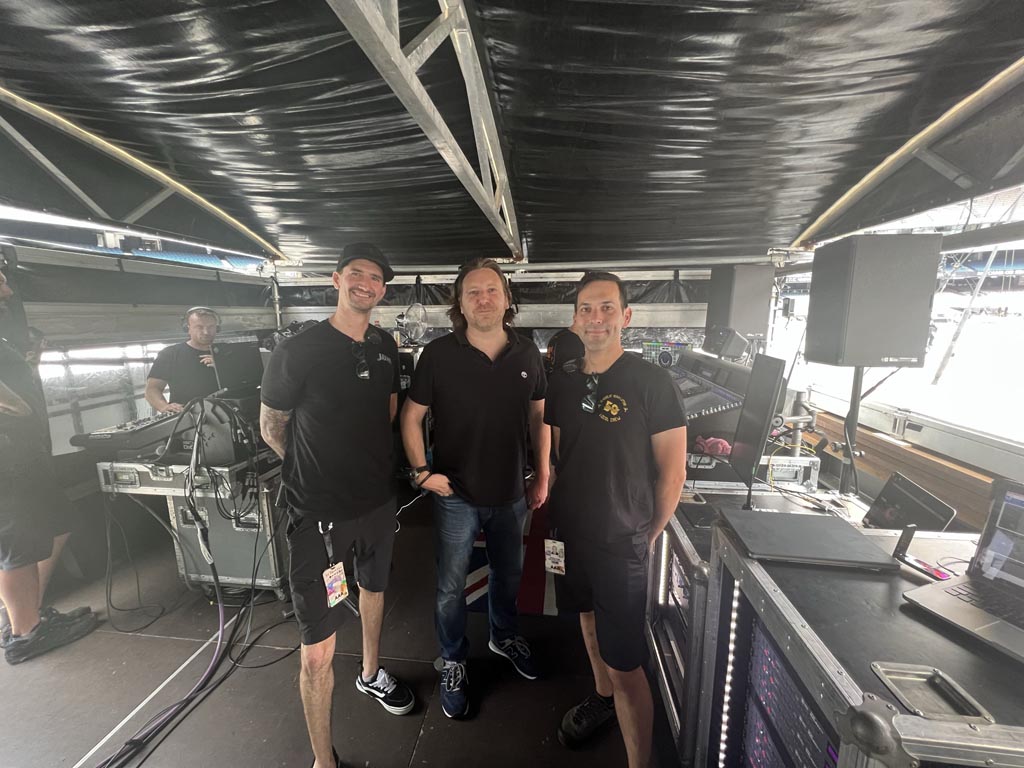
As is traditional, I sat down with Charlie and FoH engineer Chris Marsh on a pile of roadcases backstage after soundcheck and asked them about the tour, the staging, the tech, and some of the more startling things I had heard about the rig, like why they had nine DiGiCo SD-Racks for a seven piece rock band.
First, we start with the incredible mast and cable structure that holds The Halo, all of the lighting, both rings of PA, and the ‘Plectrum’ LED screens up. “The engineering firm was Cundall,” relates Chris. “They did the original wire frame system for The Millennium Dome (now O2 Arena) in London, which if you compare it with this tour, is very similar. Stage One in Yorkshire built the structures, and the artistic company with the vision was Wonder Works.”
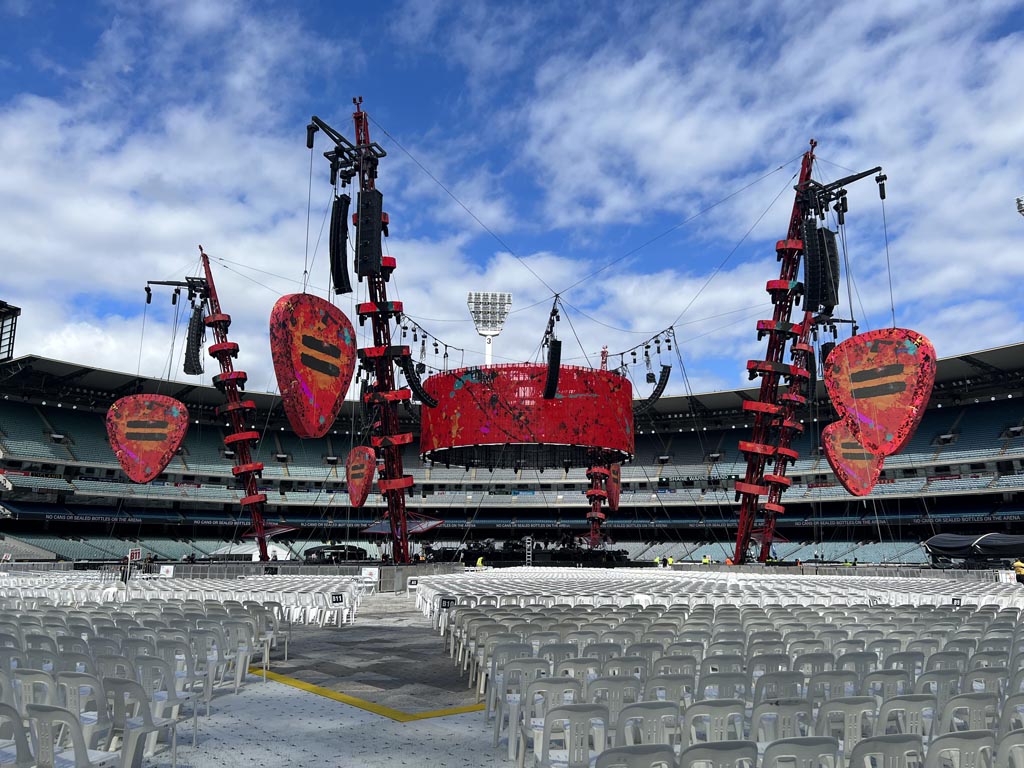
With the PA an actual structural part of the design, providing a major part of the weight and tension that holds the entire show up, how did a loudspeaker that did not yet exist come to be designed into the show? “It’s well known that Meyer Sound are my PA of choice, and LEO has served us well worldwide for years,” explains Chris. “This project was completely new from the ground up. We learnt quickly in the design process that LEO was too big and heavy for the gig. We went to Meyer Sound to ask for advice, as we wanted to stick with LEO, and they said ‘Let’s talk’. We told them about the project, they hinted they already had an idea of how to do it, so we gave them a deadline. So, while the show was being designed, they provided us drawings of PANTHER and the weights involved. We still hadn’t seen or heard it.”
Famously, the opening concert of the tour in Dublin’s Croke Park in April 2022 was PANTHER’s first gig. “Previous to that, we had heard PANTHER once, in a field, playing tracks,” smiles Chris. “We managed to run it up for a while before we got told off and had to turn it down. Dublin was PANTHER’s first time in a stadium, with a band, with live music. Obviously, we have great faith in Meyer Sound.”
“It’s the third generation of Meyer Sound line arrays that we’ve worked with,” adds Charlie Albin. “PANTHER has preserved the linearity of LEO and LYON. In a dynamic show like Ed’s you can mix quiet then loud, and it doesn’t shift tonally. It has a better dynamic range; you get all of the excitement of the drums and cymbals in the mix. When a guitar riff kicks in, it has punch and power. The biggest achievement in the engineering for me is the quality of the horn design; it just feels smooth. You walk from on axis to really off axis with a 6dB drop and it stays consistent. For an in-the-round show with 360 degree coverage, you’re in a tonally consistent listening environment no matter where you travel. Designing and optimising a PANTHER system on this scale is phenomenal, as you’re no longer fighting engineering compromises. You can focus on the room, the acoustics, and what the FoH engineer and band requires to deliver a better mix.”
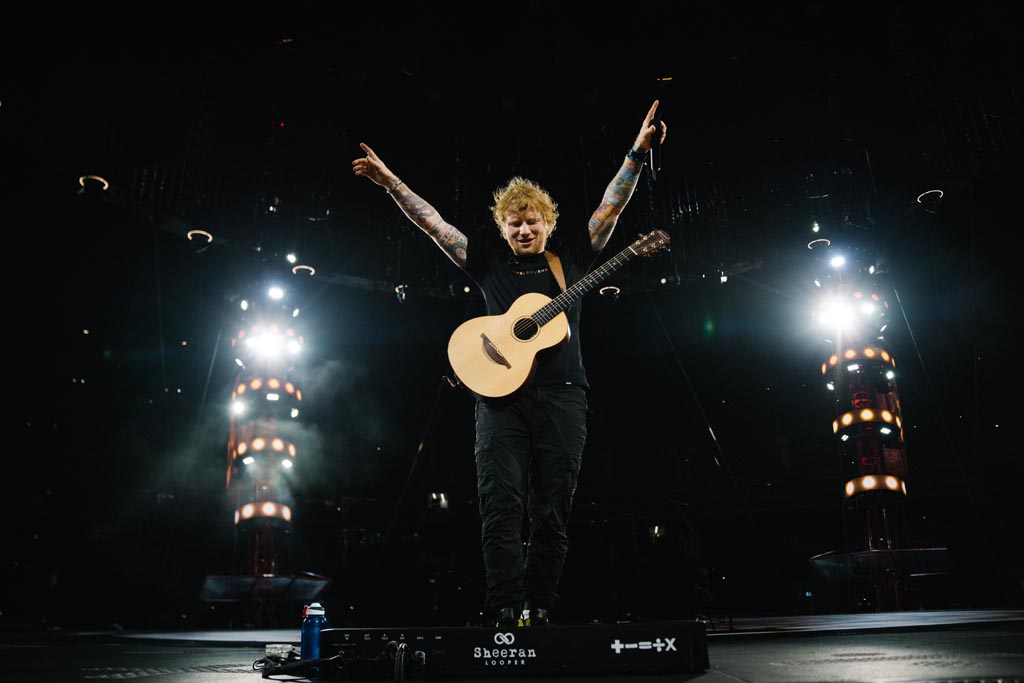
“PANTHER is lighter and smaller than its predecessors, and that makes a huge difference to show design,” agrees Chris. “The SPL power that it delivers compared to the lack of electrical power that it consumes are major factors. Over the course of this tour, we are looking at massive savings in terms of less trucks, less air freight, and less diesel going to generators. For what we’re doing right now, I wouldn’t choose any other box.”
Astonishingly, Charlie tells me it’s four hours between getting the PA truck on-site and starting to tune. “It had to be a well-thought- out system,” Charlie elucidates. “An audio team of eight handle everything on the day. It’s four hours from tipping trucks to boxes in the air, and another few hours of tuning and optimisation. We can confidently go from truck to show-ready in a day.”
The complete AVB signal path allows granular control over the system. Even in smaller venues, the full complement of loudspeakers have to go in the air, as the masts and stage need them for stability. With 28 Meyer Sound Galaxy processors running the rig, the system tech gets control of power and mute to every individual speaker, and can monitor telemetry from every amplifier module.
Chris is mixing the show on a DiGiCo Quantum 7, from which he’s also mixing monitors. Having been tipped off by the local DiGiCo distributor Group Technologies that there were nine DiGiCo SD-Rack digital stageboxes running on the gig, we needed to know why! Charlie had the answer: “There’s an SD-MiNi Rack under each of the six masts with 16 in and out,” Charlie explains. “Most of the inputs are used. For example, under one mast, there’s two guitarists with multiple guitars, two stereo rigs, redundant equipment and patching, two vocal mics, two talkback mics and more. It’s a similar story for drums, keys and even bass.”
Under the central stage, RF World is filled with Sennheiser IEM transmitters, a Sennheiser 6000 system for Ed’s guitars and mics, Sennheiser 2000 wireless mics for Ed. All up, just for Ed, there’s six guitar wireless packs, two main vocal transmitters, two loop vocal transmitters, and spares of everything. All RF input is via AES to a full size DiGiCo SD-Rack which can handle up to 56 in plus MADI. Ed’s Ableton looping rig comes to FoH via MADI through a DiGiCo Orange Box.
With Ed’s band arranged in a circle at the bottom of the masts, all facing in towards Ed on the centre stage, I was immediately consumed by the thought of how Chris would handle their mics, as they had not only LEOPARD front fill, but a not insignificant amount of PANTHER aimed straight at them. “That challenge was what I feared the most on this gig!” laughs Chris. “I was really worried I wouldn’t get enough gain before feedback, and that the band wouldn’t get enough of a seal on their in-ears and feel the sub bass being out of time. I spent a lot of time playing with it. We went into rehearsal with the front fill, the band and the PA. All the drums are triggers, which is an effective way of keeping the noise out, and the band’s vocals are going through a CEDAR Audio DNS 8 Live noise reduction processor. They work really well, and are an absolute lifesaver. The vocal mics are Sennheiser 945s and the IEMs are JH Audio with a very good seal.”
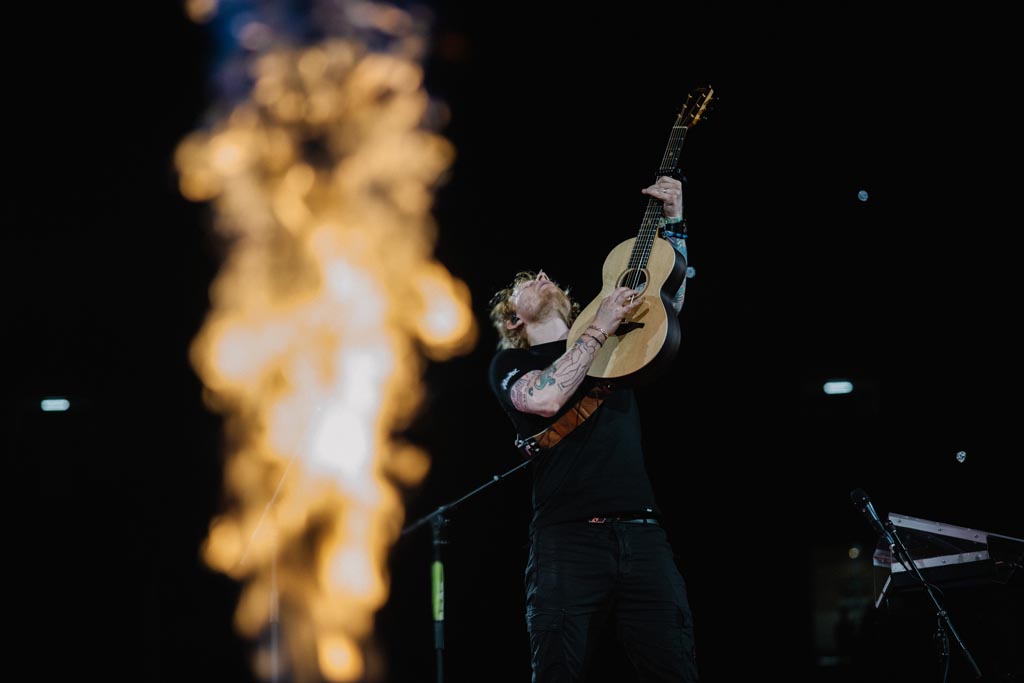
Other special tricks up Chris’s sleeve include immersive IEM mixing and some special outboard processors. “We’re using KLANG processing on the IEM mixes, which is relatively new for us with this project,” offers Chris. “We introduced KLANG to the band along with controllers for each of them to adjust their mixes. The controllers lasted through rehearsals, then the band didn’t need them. It really gives everyone a feeling of ambience. I’ve never told Ed about KLANG and I never intend to. He now keeps both in-ears in a lot more. He used to pull one out, looking for a feeling of space, and now he keeps them in because he already he has that in his head. He doesn’t know why this is, and I don’t particularly want him to start thinking about it. We tried a gig without it, and it didn’t work, so it’s KLANG forever now!”
Lurking in a rack at FoH is the old hardware implementation of Waves MaxxBass. “The MaxxBass is inserted over left-right,” reveals Chris. “I mainly use it bring out the ‘thump’ of Ed using his guitar as a kick drum in the solo looper songs. I pick a frequency, boost it, and give the song some punch. Really, I’ve always been hardware person. I also have two beautiful Bricasti M7 reverbs in the rack, but they have proven to be totally surplus to requirements in all these reverberant stadiums we’re playing!”
Meyer Sound on the Ground
- 28 GALAXY Processors
- 212 PANTHER Line Array Elements
- 78 1100-LFC Low Frequency Control Elements
- 22x LEOPARD Line Array Elements 2x ULTRA-X40 Point Source
- Loudspeakers (used at FoH as monitors)
- Network switches: 49 Luminex GigaCore 26i
Subscribe
Published monthly since 1991, our famous AV industry magazine is free for download or pay for print. Subscribers also receive CX News, our free weekly email with the latest industry news and jobs.
Recent posts
